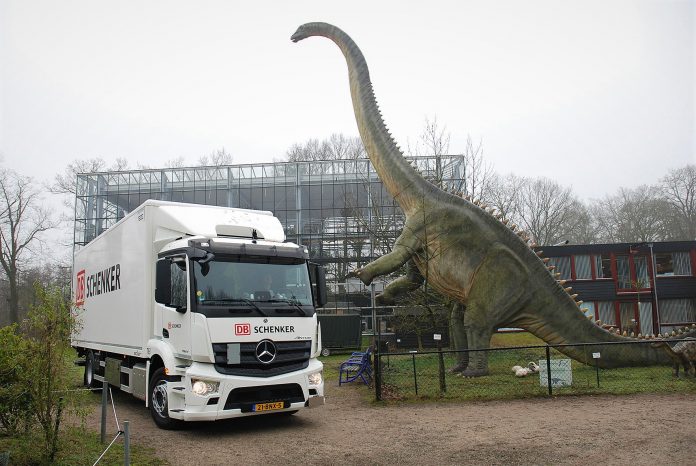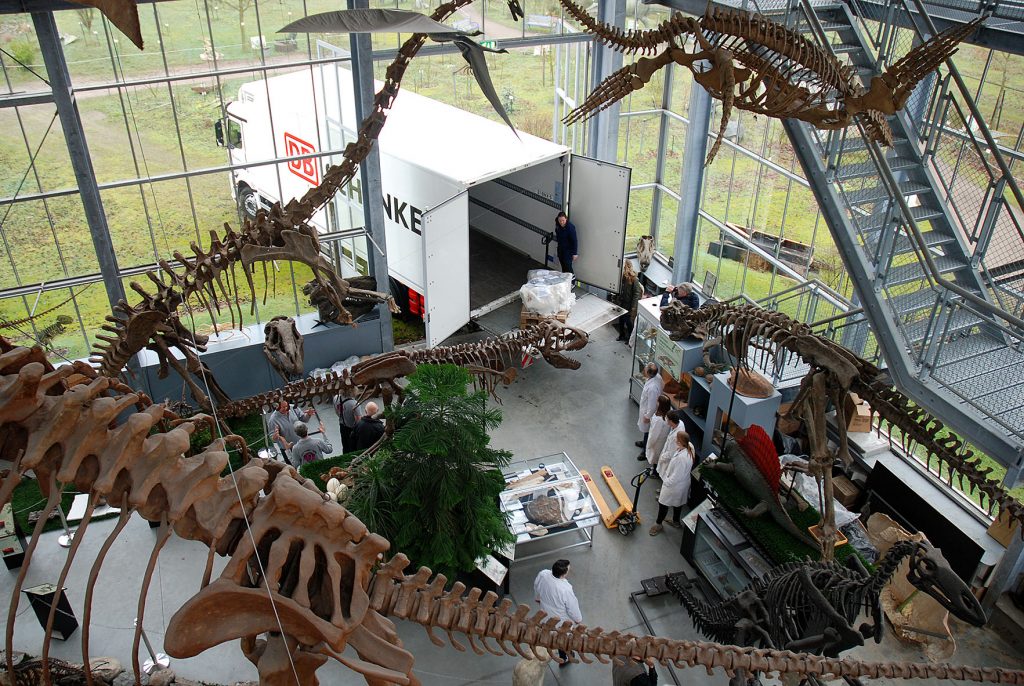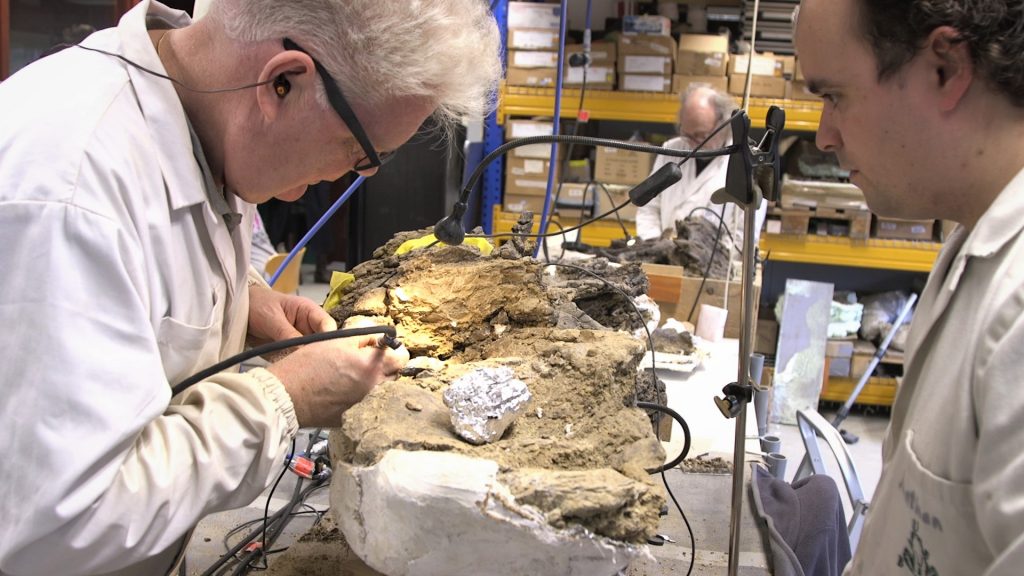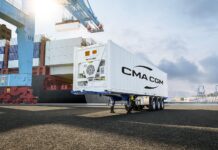
DB Schenker transported the bones of a long-neck dinosaur from Sauriermuseum Aathal in Switzerland to the Oertijdmuseum Boxtel in the Netherlands. In a publicly-accessible preparation laboratory, the several thousand pieces will be excavated and assembled to display diplodocus “Aurora” in full size. It is expected to be the most complete individual specimen in the country and potentially even a so far unknown species.
Nicole Biesheuvel, Vice President Fairs, Events & Special Logistics at DB Schenker BeNeLux: “We are proud to supply logistics know-how towards this research project and help to make it possible for people to soon see this impressive dinosaur in the museum. Sunlight exposure and vibration might damage the fragile fossils, thus the truck journey was carried out with respective special care.”

Experts of the Oertijdmuseum estimate the dinosaur’s age to be more than 150 million years. Reassembled, the skeleton will have a length of 16 meters and a height of 7 to 8 meters. Most of the display will be made up of the original bones of the dinosaur. Missing elements will be supplemented by synthetic parts. It will take several years to carefully extract the 80 to 90 bones from the stone. Around 60 specially-trained volunteers and geology students are engaged in the labor-intensive venture.
Jonathan Wallaard, Curator of Oertijdmuseum Boxtel: “We are not yet certain which species of the diplodocus family this specimen belongs to. The bones are much older than most findings, therefore it could be a new species. We chose DB Schenker since we needed a logistics expert who could take special care during transportation.”

In its lifetime, the vegetarian giant had a weight of 10 to 12 metric tons. Its fossil remains were found in Wyoming in the United States during the 1990s. The Swiss museum named it “Aurora”. A second diplodocus was named “Kirby”. “Kirby” is currently also being prepared and examined by the researchers in Boxtel and likely to have a full length of up to 20 meters. A few years ago, it was also transported to the Dutch research facility by DB Schenker. For both long-neck dinosaurs, their gender is still unknown.
“This is what special logistics is about: Whether it is an entire plant that has to be moved, specialized equipment for aerospace research projects or a precious museum artifact – DB Schenker takes care of the customized transport”, Nicole Biesheuvel adds.
“Every dinosaur specimen is unique and special. For our research, each individual can tell us, scientists, a lot. Learning about the past will shape our understanding of the future. If we get a better perception about the extinction of creatures in earlier times, this might also help us with protecting biodiversity today”, paleontologist Jonathan Wallaard explains.
Diplodocus “Kirby” will be displayed to the public at Oertijdmuseum Boxtel in early 2022. The preparation of “Aurora” is likely to be finished by approximately 2024.
อัพเดตข่าวสารและบทความที่น่าสนใจในอุตสาหกรรมโลจิสติกส์ก่อนใคร ผ่าน Line Official Account @Logistics Mananger เพียงเพิ่มเราเป็นเพื่อน @Logistics Manager หรือคลิกที่นี่















